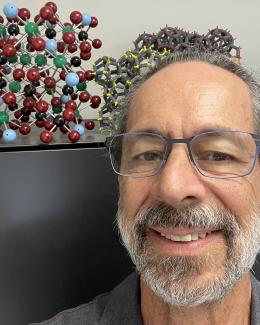Abstract
Amorphous calcium carbonate (ACC) occurs as a precursor to geological and biogenic calcium carbonate (CaCO3), yet its transformation pathways and reaction mechanisms remain inconsistent and controversial. In this study, we investigated the transformation of ACC to calcite under both solution and dry conditions, in the presence and absence of impurity ions, utilizing operando time-resolved synchrotron X-ray diffraction (TRXRD) and reactive transport modeling. Results demonstrate that TRXRD techniques allow us to differentiate dissolution-reprecipitation versus solid-state transformation mechanisms for amorphous to crystalline phase transitions. Specifically, we observe that in environments with abundant water, ACC transforms to calcite through a dissolution-reprecipitation mechanism. This features an activation energy of 63 ± 2 kJ/mol and unit cell volume contraction during calcite crystal growth. Conversely, under water-limited conditions, ACC to calcite transformation proceeds via a solid-state transformation mechanism, with an activation energy of 210 ± 2 kJ/mol, three times greater than the dissolution-reprecipitation route, and a unit cell expansion during crystalline calcite growth. To illustrate the magnitude of these effects, the rates of calcite growth were similar during dissolution-reprecipitation at 3 °C [0.00207(35) s–1] and solid-state transformation at 280 °C [0.00134(11) s–1]. Moreover, the incorporation of an impurity, strontium, significantly retards the rate of calcite growth while expanding its unit cell but whose incorporation is history dependent. Reactive transport modeling of the dissolution–precipitation kinetics suggests that ACC must be dissolving as compact aggregates. These various transformation mechanisms drive diverse geological and biological carbonate formations, impacting their use as paleoenvironmental markers and functional materials synthesis.






